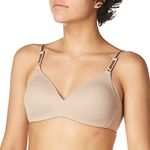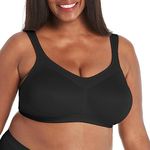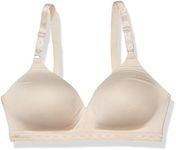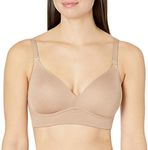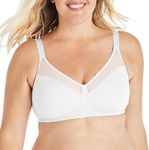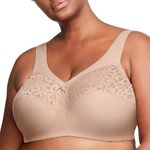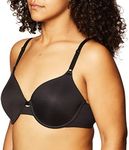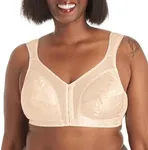Buying Guide for the Best Bras For Older Women
Choosing the right bra as an older woman is all about comfort, support, and ease of use. As our bodies change with age, factors like skin sensitivity, breast shape, and mobility can influence what makes a bra feel good and function well. The best approach is to focus on features that provide gentle support, are easy to put on and take off, and use soft, breathable materials. Understanding the key specifications will help you find a bra that fits your lifestyle and body comfortably.Support LevelSupport level refers to how much lift and hold the bra provides. This is important because, with age, breast tissue can become softer and may need more support to feel comfortable and prevent strain on the back and shoulders. Light support bras are best for smaller busts or lounging, medium support works for everyday wear, and high support is ideal for larger busts or more active days. Consider your daily activities and breast size to decide how much support you need.
Closure TypeClosure type describes how the bra fastens, such as front-closure, back-closure, or pull-on styles. This matters because some older women may have limited mobility in their shoulders or hands, making certain closures easier to manage. Front-closure bras are often the easiest to put on and take off, while back-closure bras offer more adjustability. Pull-on bras are simple but may be harder to get over the head if you have limited movement. Think about your range of motion and dexterity when choosing a closure type.
Strap DesignStrap design includes the width, adjustability, and padding of the bra straps. Wider, padded straps help distribute weight more evenly and reduce pressure on the shoulders, which is especially helpful if you have sensitive skin or larger breasts. Adjustable straps allow you to customize the fit. If you experience shoulder pain or have sloping shoulders, look for bras with wide, cushioned, or even racerback straps for extra comfort and security.
Material and FabricMaterial and fabric refer to what the bra is made from, such as cotton, microfiber, or lace. This is important because older skin can be more sensitive or prone to irritation. Soft, breathable fabrics like cotton or bamboo are gentle and help prevent chafing, while synthetic blends can offer more stretch and moisture-wicking. If you have sensitive skin, prioritize natural, seamless, or tagless options to avoid discomfort.
Cup Shape and PaddingCup shape and padding describe the contour and thickness of the bra cups. Some bras have molded or lightly padded cups for a smooth look under clothes, while others are unlined for a more natural feel. Padding can add shape and modesty, but may not be necessary if you prefer a lighter, cooler bra. Consider whether you want extra shaping or just gentle coverage, and choose a cup style that matches your comfort and appearance preferences.
Wire vs. WirelessThis refers to whether the bra has an underwire for added support or is wire-free for comfort. Underwire bras can provide more lift and separation, which some women find helpful, especially with larger busts. However, wireless bras are often more comfortable and less restrictive, making them a popular choice for older women. If you prioritize comfort and have sensitive skin or ribcage, a wireless bra may be the best fit, but if you need extra support, consider a well-padded underwire style.




